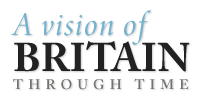In 1870-72, John Marius Wilson's Imperial Gazetteer of England and Wales described Lee like this:
LEE, a village, a parish, and a sub-district, in Lewisham district, Kent. The village stands on the rivulet Lee, near Lewisham and Blackheath r. stations, 1½ mile SSE of Greenwich; is a pleasant, salubrious, and picturesque place; and has a metropolitan police station, and a post office, ‡ under Lewisham, London SE. ...
Both itself and its environs, within the parish, are a resort of merchants and wealthy families from the metropolis; and many handsome residences have been erected, since 1860, in Lee Park, Manor Park, and Lee Road. The parish comprises 1, 273 acres. Real property, £37, 952. Pop., in 1851, 3, 552; in 1861, 6, 162. Houses, 953. Lee Manor House, Lee House, Lee Grove, Lee Place, Lee Villa, and others are old mansions; a continuous line of new villas connects the village with Blackheath Park; and so very many other new villas and ornate cottages are disposed in terraces or lines that a large proportion of the parish may be pronounced a metropolitan suburb. The living is a rectory in the diocese of London. Value, £464.* Patron, the Lord Chancellor. The old church went to ruin; but the cemetery of it continues to be interesting, for containing several handsome monuments, one of which is to the Dacre family, and another to the astronomer Dr. E. Halley. A new church was built in 1842; but this was found, in a few years, to be too small for the increasing population, and was then taken down. The present church stands near the old one, in a beautiful situation with an extensive prospect; was erected at a cost of £8, 000; and is a handsome structure with a lofty spire. Two other churches, Christ Church and Holy Trinity, are within the parish; and serve for chapelries constituted in 1840 and 1863, and containing a pop. of respectively 2, 333 and 1, 100. The livings of them are p. curacies; the former in the patronage of the Rector, the latter in that of L. Glenton, Esq. Value of the former, £300;* of the latter, not reported * Christ Church stands in Lee Park; and is a neat structure, in the pointed style. Holy Trinity church was completed in 1864; is cruciform, in the early English style, of Kentish rag with Bath stone dressings; has an external staircase turret, surmounted by an openwork oak bell turret and shingled spire; and presents a somewhat novel yet heavy appearance. There are chapels for Baptists and Wesleyans; a well conducted proprietary school; national and infant schools; thirty good alms houses, for the wives of freemen of the Merchant Tailors' company; alms houses, with endowed income of £71, founded by and T. Boone; and other charities £62.—The sub-district contains Kidbrook liberty, and the part of Lewisham parish lying N, NE, and NW of Plough-Bridge. Acres, 2, 399. Pop. in 1851, 8, 478; in 1861, 11, 807. Houses, 1,876.
Lee through time
Lee is now part of Lewisham district. Click here for graphs and data of how Lewisham has changed over two centuries. For statistics about Lee itself, go to Units and Statistics.
GB Historical GIS / University of Portsmouth, History of Lee, in Lewisham and Kent | Map and description, A Vision of Britain through Time.
URL: https://www.visionofbritain.org.uk/place/20089
Date accessed: 29th April 2024
Not where you were looking for?
Click here for more detailed advice on finding places within A Vision of Britain through Time, and maybe some references to other places called "Lee".
